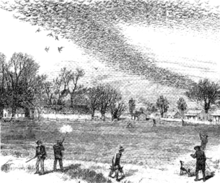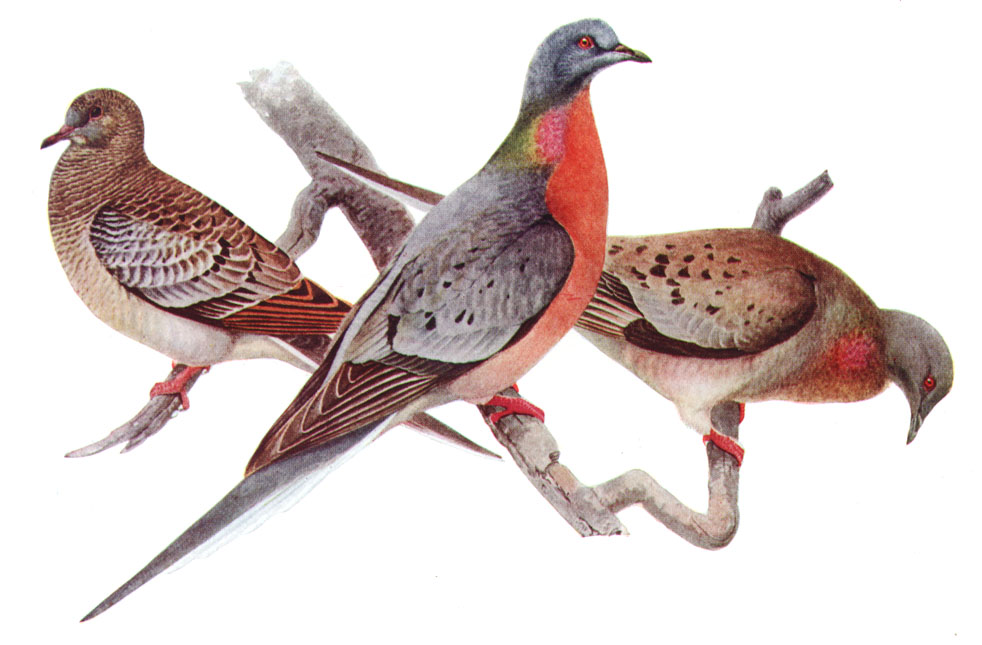 100 years ago this week, the passenger pigeon went extinct. On September 1st, 1914, Martha, the last known example of her species, died in her cage at the Cincinanti Zoo.
100 years ago this week, the passenger pigeon went extinct. On September 1st, 1914, Martha, the last known example of her species, died in her cage at the Cincinanti Zoo.Martha and her kind came to a rapid end. As recently as 1860, billions of passenger pigeons had been flying around North America, and so great was their number that they often darkened the day-time sky.

Martha has become a cautionary tale of the human ability to extinguish other species. Joel Greenberg in his book A Feathered River Across the Sky: The Passenger Pigeon's Flight to Extinction (Bloomsbury, 2014), discusses how overhunting and elimination of the birds' habitat due to the spread of the railroad pushed the species to extinction.
Over a century has passed with no passenger pigeons. As scientists discuss whether we have entered into the planet’s sixth period of mass extinction, what lessons should we learn from the disappearance of the passenger pigeon? Some scientists are even weighing whether or not to clone and resurrect the bird.
Here at Origins, we've compiled a few links to help you learn all you need to know about the history of our extinct fine-feathered-friend and what the future has in store.
- "A Century of Extinction," by Elizabeth Kolbert (New Yorker, August 30, 2014)
- "Saving Our Birds," by John W. Fitzpatrick (New York Times, August 29, 2014)
- "'Martha' The Last Passenger Pigeon," Smithsonian Institution, National Museum of Natural History
- "The Flight of the Passenger Pigeon, Now 100 Years Extinct," by Krishnadev Calamur (National Public Radio, September 1, 2014)
- "Century After Extinction, Passenger Pigeons Remain Iconic- And Scientists Hope to Bring Them Back," by Carl Zimmer (National Geographic, August 31, 2014)
- "Why the Passenger Pigeon Went Extinct," by Barry Yeoman (Audobon Magazine, May-June 2014)
- Project Passenger Pigeon

